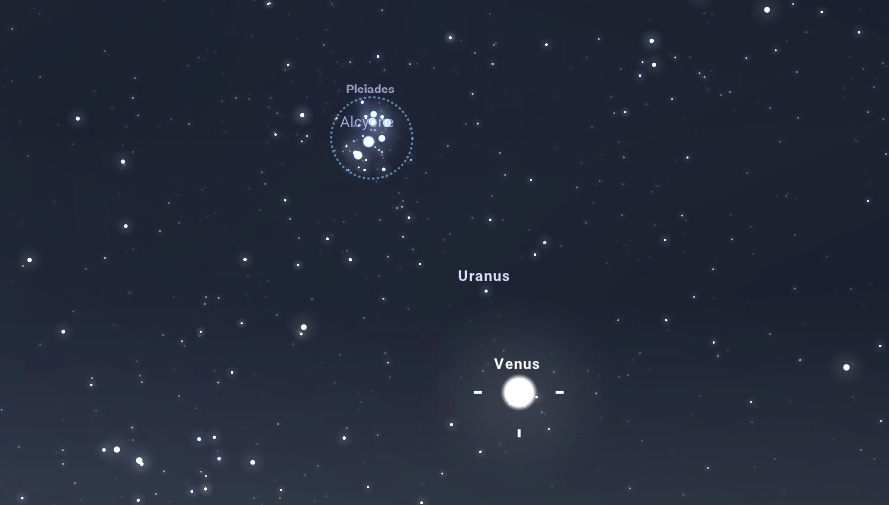The DWARFVision (Interactive) Events Guide for July 2025
A Season of Celestial Encounters - Your monthly Sky-Guide from DwarfVision!
Hey Astro-nuts,
We're already deep into July, and the celestial show is just getting started! This month promises some truly spectacular sights for all you Dwarfers across Europe and the Americas. This special report comes to you straight from DwarfVision, your guide to the cosmos & your D2/3!
Tonight's Highlight (July 4th): Mercury at its Best!
Kicking off the month, tonight, July 4th, our innermost planet, Mercury, reaches its "greatest eastern elongation." For us, that means Mercury will be at its highest and most easily visible point in the western sky just after sunset. It's usually a shy one, hiding in the Sun's glare, so this is your prime window to spot this elusive little world. Look for a small, star-like point of light shining at a respectable magnitude of 0.5.
Spectacular Morning Venus
While you're out there, keep an eye out for another celestial dance happening simultaneously! Brilliant Venus (our dazzling "morning star") will be passing just over 2 degrees from the faint ice giant Uranus in the constellation Taurus. This one's a bit more of a challenge, requiring DWARF 2/3 or Binos, but Venus acts as your perfect guide to pinpointing Uranus's tiny, greenish-blue disk.
Midsummer Meteors: The Southern Delta Aquariids
Mark your calendars for the night of July 30-31! While the August Perseids often steal the show, in 2025, the Southern Delta Aquariid meteor shower is set to be the real star. Why? Because its peak coincides with a new moon phase, it guarantees beautifully dark skies. Expect a steady rate of up to 25 meteors per hour. Find a dark spot, lie back, and let your eyes adjust for at least 20 minutes. The radiant (from which they appear to originate) is in Aquarius, well-placed in the southern sky for European observers during the early morning hours.
D3 METEOR CAPTURE TIP: Point your D3 towards the Milky Way centered on a star around 45% above the southern horizon and start a widefield session at 15 - 30 sec exp X 15 or 20 Gain x999 time. Lounge near your dwarf on the lookout for a bright meteor to streak across your shot. As soon as you have one, stop the session. You will have the shot of a lifetime! Then repeat :) If you can stay up till the wee early morning, you may be lucky and get a few of the Milky Way Meteor Photos!
Planetary & Lunar Highlights Throughout July:
July’s Moon
Full Buck Moon (July 10): This month's full moon is traditionally named for the time male deer begin to grow their new antlers. A beautiful sight, but remember, it's a standard full moon, not a "supermoon."
Moon's Grand Tour: Our Moon will continue its monthly journey, serving as a convenient guidepost. Look for it passing near Saturn and Neptune on July 16, close to Jupiter on July 23, and making a fine pairing with the famous Pleiades star cluster (M45) on July 20. These are all fantastic DWARF targets!
Planetary & Objects DSO Encounters for Your DWARF Scopes:
July offers some prime opportunities for astrophotographers and DWARF 2/3 enthusiasts as planets glide past well-known deep-sky objects (DSOs).
Venus Passes M35 (July 31): To close out the month, brilliant Venus provides another fantastic photographic target as it passes near the large open star cluster M35 in the constellation Gemini. This pairing will be visible in the pre-dawn sky and will be a beautiful sight through DWARF 2/3.
Comet Corner: A Tale of Two ATLAS Comets
For our dedicated Dwarfers, July offers a fascinating contrast in cometary tracking:
The Fading Star: C/2023 A3 (Tsuchinshan-ATLAS): The celebrity comet of 2024 is now a very faint object (magnitude 13−14.6) in Lyra and Hercules. It's far beyond the naked eye and at the edge of D2/3 reach, but an excellent challenge for astrophotographers with large telescopes to document its journey back to the outer solar system.
The Rising Hope: C/2025 K1 (ATLAS): This is the one to watch! As it approaches its closest pass with the Sun in October, C/2025 K1 (ATLAS) is expected to brighten steadily. By the end of July, it should reach around magnitude 12, making it visible as a small, fuzzy patch in medium-to-large amateur telescopes and possibly absolutely within reach of a DWARF 2/3 from dark sites. A perfect target to track week by week!

Other Faint Visitors: For the most equipped Astro-nuts, keep an eye out for C/2022 N2 (PanSTARRS) and periodic comet 217P/LINEAR, both around 13th magnitude.
So grab your DWARF 2/3 (or just your eyes!), find a spot with a clear view, and enjoy the incredible celestial ballet July has to offer!
Clear Skies,
Duncan from DwarfVision
Dropping soon on DwarfVision!
The DwarfVision Summer & Fall Milky Way challenge - 20 DSOs mingling with the Milky Way to challenge your D2/D3 capture skills!
The DwarfVision Shop - We have a range of custom posters and charts all derived from D2 & D3 captures, PLUS HOW TO guides and Courses dedicated to your DWARF passions! (sounds so wrong :)
The DwarfVision DATA CLUB - We are finalizing the details of our 50+ Object DB, with the first DSO for paying subscribers set to drop soon!












